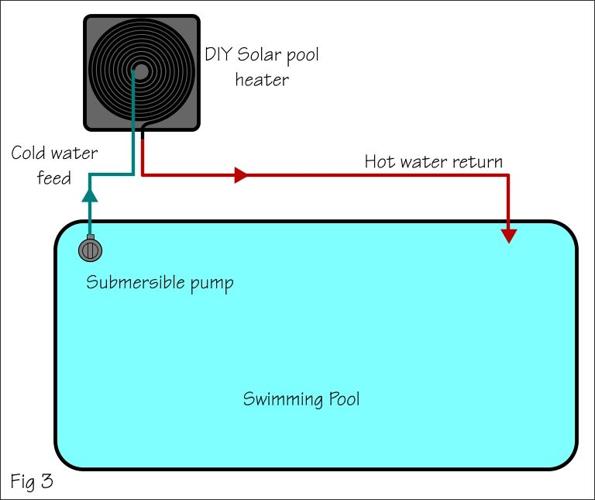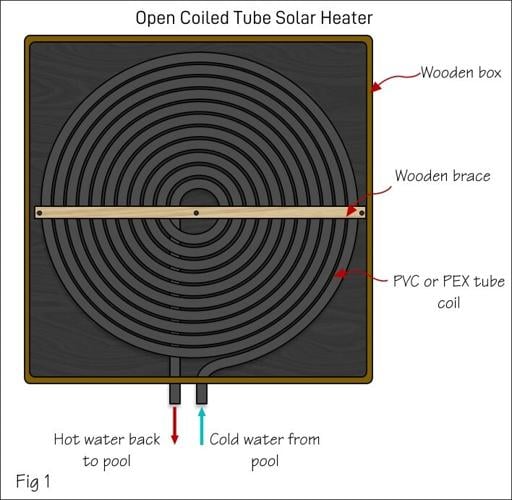
Pool owners that live in temperate climates will agree that pool heating is more of a must-have than a nice-to-have. Swimming pools are often the most significant single additional investment homeowners make. And getting the maximum value out of that investment is a top priority for most—both in terms of returns on investment and optimized family lifestyle value.
But despite that, pool heaters are generally costly to install. This outlay can add so much to the cost of the pool that it tips the balance financially. Yet, there is a way to heat your collection without breaking the bank. And that is a DIY solar pool heater.
The DIY solar pool heater - What is it, and how does it work?
The solar pool heater works by pumping swimming pool water through a series of tubes or pipes exposed to heat from the sun. The solar radiation heats the water, and the pump circulates the hot water back to the pool to repeat the process.
Although this may sound a little simplistic, it works well. In some cases, the pool water in the solar heater may boil. And it's not unrealistic to raise your swimming pool temperature by 10° in ideal circumstances with solar pool heating.

How well do DIY solar heaters work?
In short, as well, if not better than many off-the-shelf systems. DIY solar pool heaters rely on precisely the same principles as most commercial systems. And they offer the additional benefit of you being able to specifically tailored them to your needs. To top it all, homemade solar pool heaters are cheaper to install and cost nothing to run.
What kinds of DIY solar pool heaters are there?
DIY solar pool heaters generally fall into two broad categories, each with two sub-categories. They are:
- Coiled tube pool heaters - open or glazed
- Vertical riser collector pool heaters - open or glazed
Fig 1 below illustrates an open coiled tube solar pool heater. Fig 2 depicts a glazed vertical riser solar pool heater.
To clarify, These types of DIY pool heaters are mounted in wooden boxes. Open variants have no covering, and the collectors are exposed. Glazed heaters have a sheet of clear acrylic or glass covering the box. This improves insulation and increases the efficiency of the solar heater.

Building a DIY open coil solar pool heater
To build this easy DIY solar pool heater, you'll need the following.
- 1 x 4' x 4' sheet of plywood
- 2 x 10' lengths of 2 x 4' framing timber
- 1 x length of 1 x 2 ' timber
- 1 x 250' roll of ½ inch PVC irrigation tubing
- 2 x ½ inch compression fittings
- 1 x quart tin of high heat black paint
- 1 x pack of 8' zip ties
- 1 x ½ inch hole saw
- A miter box or miter square
- A corded or battery drill
- A wood saw
- A wood screw assortment
Building the box
First, cut the 2 x 4 timber lengths into 4 x 4' sizes and miter the ends to 45°. Lay them out to form a 4' x 4' box and use wood screws to secure them. Make sure the box is square, then lay the 4 ' x 4' plywood sheet on top of the box. Now drill pilot holes at regular intervals through the sheet and into the 2 x 4 frame. Lastly, use wood screws to secure the sheet to the frame. At this point, you can paint the box with black paint.
Laying out the pipe coil
This is the most tricky part of the build. In most cases, the coil memory built into the roll of the hose will assist. But it still takes some gymnastics to get a closely spaced coil laid out in the box. You can use fig 1 as a reference for what the result should look like.
Note: Leave around 4 feet of slack on the inner and outer ends of the roll.
You can zip tie successive coils together as you progress. This also makes it easier to get the final brace member installed when you're done.
Drilling the hose exits
A 4' x 4' box of this type will typically take around 220 feet of ½ inch tube. The exit holes can be drilled once the box is almost filled (leave approximately 2 inches of free space around the roll). Again, use Fig 1 to calculate the approximate position of the holes.
Zip tie the inner end of the tube across the roll as indicated. Then turn the roll over so it is at the bottom of the registration. This will make bracing the roll more accessible. The outer end of the roll can then be gently bent to lie parallel to the inner end. Measure off around 6 inches beyond the box on both hose ends and cut the excess off.
Mark the exit positions and lift the roll clear of the box. Now use the hole saw to drill the exit holes. You can now feed the two hose ends through the holes and position the roll in the box.
Bracing the tube roll
Cut a 3¾ foot length of 1 x 2 ' timber and drill holes through the center and end. Using long wood screws, lightly screw the brace down onto the tube roll to secure it.
Terminating the hose ends
You can now fit the ½ inch compression fittings to the hose ends to complete the pool heater construction.
Connecting the heater to the pool water circuit
The easiest way of getting the pool water through a heater of this sort is to use a small dedicated submersible pump separate from the pool filter circuit. They can be plumbed into your pool pump circuit, but their modest size doesn't warrant added costs. Particularly with in-ground pool types.
Fig 3 details a basic swimming pool heater layout using a submersible pump.
The wrap-up
The great thing about this type of DIY pool heater is its low cost and modular nature. You can stack several units in series if you need to heat a larger pool. That said, if you choose to do this, it would be best to foam insulate the boxes and include glazing. These measures significantly improve the overall efficiency of DIY pool heaters, primarily when they are used on budget-friendly above-ground pool types.





(0) comments
We welcome your comments
Log In
Post a comment as Guest
Keep it Clean. Please avoid obscene, vulgar, lewd, racist or sexually-oriented language.
PLEASE TURN OFF YOUR CAPS LOCK.
Don't Threaten. Threats of harming another person will not be tolerated.
Be Truthful. Don't knowingly lie about anyone or anything.
Be Nice. No racism, sexism or any sort of -ism that is degrading to another person.
Be Proactive. Use the 'Report' link on each comment to let us know of abusive posts.
Share with Us. We'd love to hear eyewitness accounts, the history behind an article.